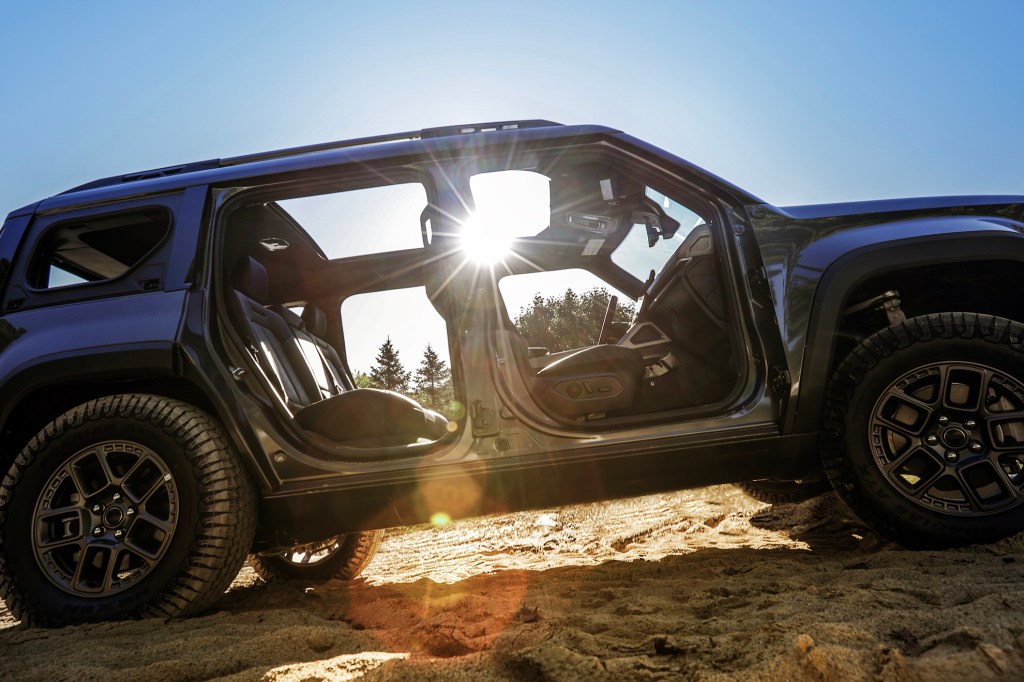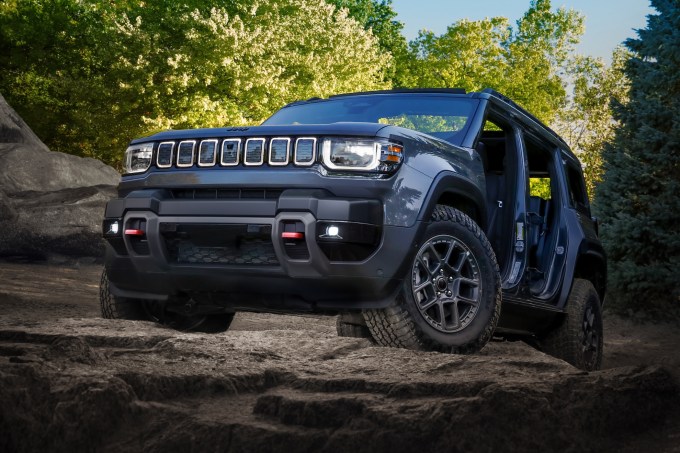
Image Credits:Jeep/Stellantis
The Jeep Recon, an all-electric SUV with an estimated 250 miles of range, is here, and I couldn’t be more surprised. Here’s why.
Three years ago, Jeep unveiled how it was reshaping its portfolio with the launch of three EVs — two of which were bound for the North American market by 2024. The all-electric Jeep Recon and Wagoneer S models were part of the brand’s plan to dominate to the electrified SUV market. At the time, parent company Stellantis was aiming for EVs to make up half of Jeep’s sales in North America — and all of its sales in Europe — by 2030.
The Wagoneer S eventually came to market in early 2025, while the Jeep Recon remained in limbo.
Meanwhile, most automakers, including Stellantis, which also owns Chrysler and Ram, began to backpedal on ambitious EV plans as demand failed to meet lofty forecasts. In September, Ram canceled plans to produce a battery-electric full-size pickup, opting to focus on bringing an extended-range Ram 1500 REV to market. A month later, Stellantis announced it would invest $13 billion to beef up its U.S. manufacturing over the next four years as part of a broader revival plan directed by its new CEO. But this time, the electrification was not the centerpiece of the multi-billion-dollar commitment.
And yet, the Jeep Recon — with its Wrangler vibes — has survived.

The Trail Rated 2026 Jeep Recon. Image Credits: Stellantis/Jeep
The company revealed that the 2026 Jeep Recon, with a starting price of $65,000 (not including the $1,995 destination fee), will go into production next year at the Toluca Assembly Plant in Mexico. It will initially launch in the U.S. and Canada, followed by a global expansion.
The Recon is a four-wheel-drive EV that carries the “Trail Rated” badge, an off-roading term that carries some weight among enthusiasts.
Join the Disrupt 2026 Waitlist
Add yourself to the Disrupt 2026 waitlist to be first in line when Early Bird tickets drop. Past Disrupts have brought Google Cloud, Netflix, Microsoft, Box, Phia, a16z, ElevenLabs, Wayve, Hugging Face, Elad Gil, and Vinod Khosla to the stages — part of 250+ industry leaders driving 200+ sessions built to fuel your growth and sharpen your edge. Plus, meet the hundreds of startups innovating across every sector.
Join the Disrupt 2026 Waitlist
Add yourself to the Disrupt 2026 waitlist to be first in line when Early Bird tickets drop. Past Disrupts have brought Google Cloud, Netflix, Microsoft, Box, Phia, a16z, ElevenLabs, Wayve, Hugging Face, Elad Gil, and Vinod Khosla to the stages — part of 250+ industry leaders driving 200+ sessions built to fuel your growth and sharpen your edge. Plus, meet the hundreds of startups innovating across every sector.
As a result, the EV comes standard with the brand’s Selec-Terrain traction management system, underbody protection, tow hooks, off-road tires, and e-locker axle technology that allows drivers to flip a switch and electronically lock the differential to ensure torque goes to both rear wheels — another handy off-road feature.
“With the Jeep Recon, we’re proving that electrification isn’t just compatible with off-road excellence, it can elevate it, delivering instant torque, precision control and a quieter, more connected driving experience that’s uniquely Jeep,” brand CEO Bob Broderdorf said in a statement.
The company also announced Tuesday it is adopting the North American Charging System for select EVs, including the Jeep Recon. The NACS system will not be integrated into the Jeep Recon, however. Owners will need a NACS adapter to access thousands of Tesla supercharging stations.

The 2026 Jeep Recon interior. Image credits: Stellantis/Jeep
The powertrain, which includes a 100-kilowatt-hour battery pack, delivers 650 horsepower and 620 pound-feet of torque — a powerful combination for off-roading. It also accelerates from zero to 60 miles per hour acceleration in 3.6 seconds. Why one would want that in a Jeep is one of my lingering questions.
But the larger question — and one that won’t be answered until the vehicle comes to market — is whether SUV-loving Americans buy it, especially when the base version of its iconic 2026 Wrangler starts at about $49,895.
Perhaps that notable torque and power, slick interior that includes a 14.5-inch horizontal touchscreen (the largest ever for a Jeep), coupled with classic features, including the Wrangler-inspired LED taillamps, a swing gate, and removable doors will do the trick.

-
 C114 Communication Network
C114 Communication Network -
 Communication Home
Communication Home


